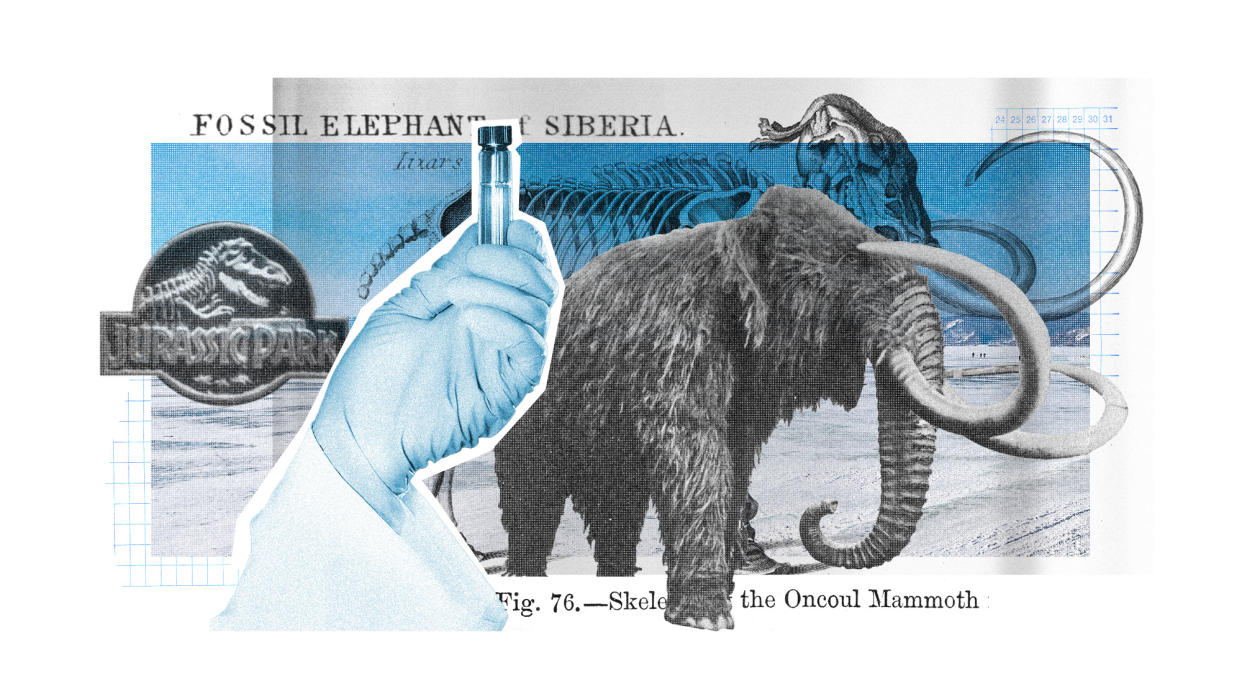The de-extinction process to bring woolly mammoths back to life

"Your scientists were so preoccupied with whether they could, they didn't stop to think if they should," said Jeff Goldblum's character Dr Ian Malcolm in the 1993 blockbuster "Jurassic Park".
People could be saying something similar in just a few decades' time about a major announcement by a Dallas-based biotechnology and genetic engineering company about its efforts to revive the long-extinct woolly mammoth.
Colossal Laboratories and Biosciences revealed last week that it has successfully converted cells from Asian elephants into induced pluripotent stem cells (iPSCs). The start-up now aims to convert these iPSCs into egg and sperm cells that will carry selected genetic traits. From there, the plan would be for a surrogate elephant mother to carry a fertilised egg.
According to Colossal's own definition of "de-extinction", the company wants to create an elephant that "both resembles and is genetically similar to an extinct species" – essentially, one that biologically mimics their ancient sister species.
How does this cell technology work?
PSCs exist in embryos and can become almost any type of cell. Colossal specifies that its pluripotent stem cells are "induced" because they were bioengineered in a lab. This is the first time that iPSCs have been derived from elephants, said New Scientist.
"What's beautiful about the cells is they can potentially renew indefinitely and differentiate into any cell type of the body," said Eriona Hysolli, head of biological sciences at Colossal.
Not only can these iPSCs be used in Colossal's primary goal of creating an animal biologically similar to woolly mammoths, they can help to improve our understanding of the endangered Asian elephants they came from, said Oliver Ryder, director of conservation genetics at the San Diego Zoo Wildlife Alliance.
Ryder, who isn't involved in Colossal's research, told NPR that its work "opens up new possibilities for conserving species' genetic diversity, preventing extinction and contributing to the sustainability of species".
What is the end goal?
Colossal isn't trying to create a woolly mammoth simulacrum just for kicks, said Wired. The start-up hopes its research will eventually produce an animal that can play the ecological role that woolly mammoths once did in the Arctic ecosystem – "grazing the land and trampling snow cover, potentially decelerating the melting of permafrost".
A small 2020 study conducted in Siberia indicated some evidence of lower soil temperatures in areas where large mammals were historically present. But some experts have disagreed with this approach, stressing that the uniquely rapid rate of warming occurring in the Arctic would make it difficult for specially adapted elephants to make much difference.
Many other concerns have been raised too. The Asian elephants that Colossal relies on for its cells are endangered. Once their work progresses, they will need to use them as surrogate mothers as well too.
The combined dangers of cloning, genetic engineering and surrogacy have led King’s College London stem cell expert Dusko Ilic to call for "careful consideration of the ethical implications and consequences" of this project. "There are bound to be failed attempts," he told New Scientist. "How many elephant cows will have to be subjected to the experimental pregnancies?"
Gabriela Mastromonaco, senior director of wildlife science at Toronto Zoo, suggested that the focus should be shifted back to the present rather than trying to resurrect the past, calling Colossal's research "a distraction".
"There are so many species going extinct today. We're actually not going to be able to help any of them if we're thinking about the wooly mammoth," she told NPR.
What will happen next?
The team next needs to edit the DNA of these iPSCs to carry the desired traits of a woolly mammoth using fossil-extracted mammoth DNA. Colossal's iPSC conclusions have not yet been peer-reviewed and further research is necessary.
Speaking to CNN, George Church, a geneticist at Harvard University and Colossal's co-founder, laid out three benchmarks that the scientists are working towards.
The first would be a fully formed and viable engineered elephant, which he projected as being possible within "six years from 2021". He said the next "major milestones" would be the development of an elephant that's resistant to the cold, and if the project is "scalable" and "doesn't involve surrogates". That final step is "an unknown distance out".

